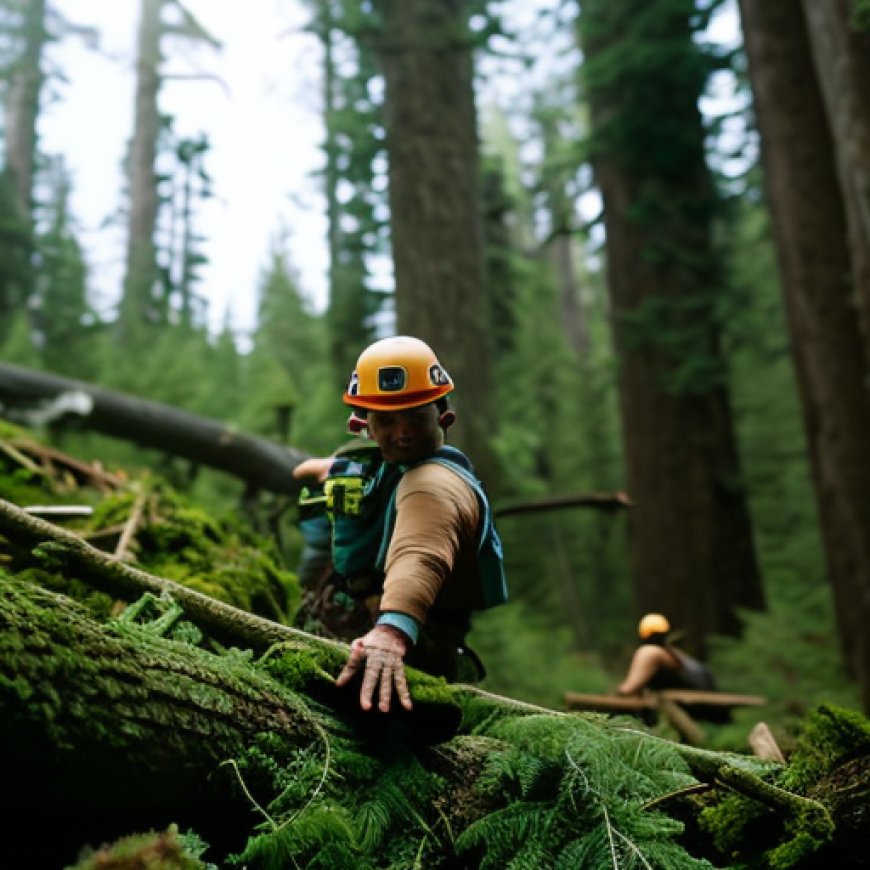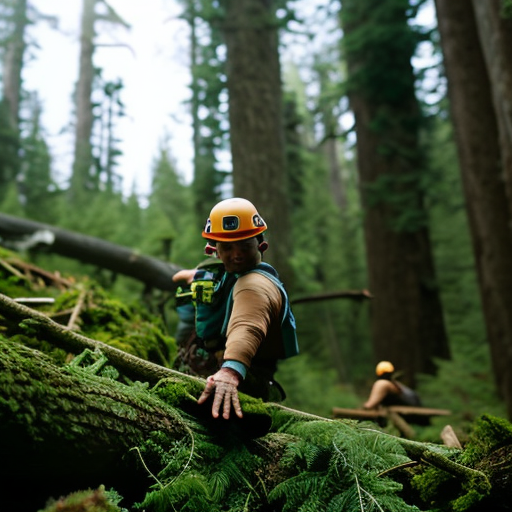Southern Oregon tree sitters protest old-growth logging from 100 feet above the forest floor
Southern Oregon tree sitters protest old-growth logging from 100 feet above the forest floor Oregon Public Broadcasting


A Tree Sitter Protests Old-Growth Logging in Oregon
Introduction
In dense forests off I-5 in Josephine County, Oregon, a group of activists known as “forest defenders” have set up camp to fight proposed logging in the area. This land, managed by the Bureau of Land Management (BLM), is part of the Poor Windy project, which includes commercial timber harvest and forest thinning to prevent wildfires. The activists are particularly concerned about the potential logging of old-growth trees.
Old-Growth Trees and Logging
Old-growth trees, typically over 174 years old and between 36 to 40 inches in diameter, are generally protected from logging. However, the activists claim that a logging company plans to put a road through their camp, which would result in the cutting down of these old-growth trees. George Sexton, conservation director with the Klamath-Siskiyou Wildlands Center, calls this a loophole in the protection measures.
Sustainable Development Goals (SDGs)
- Goal 15: Life on Land – Protecting old-growth forests and biodiversity
- Goal 13: Climate Action – Addressing the climate crisis
Conservation Efforts and Lawsuits
Conservation groups have been fighting timber sales like the Poor Windy project, arguing that the federal government needs to do more to protect old-growth forests. They have sent a letter to Interior Secretary Deb Haaland and BLM Director Tracy Stone-Manning demanding the cancellation of the project. The BLM has already scaled back the plan due to its impact on protected spotted owl habitat. Environmental groups have also filed a complaint against the BLM to protect old-growth forest in another project.
BLM’s Perspective
The BLM claims that old-growth logging is not the goal for these projects. They design timber sales and access roads to minimize impact and prioritize safety. According to the BLM, there are few mills left in Oregon that can process old-growth sized logs, so any felled large trees are left on the forest floor to provide wildlife habitat. The BLM follows legal requirements for forest management in Josephine County, including thinning out forests to reduce wildfire fuel.
Debate on Wildfire Control
There is disagreement about whether the BLM’s actions will effectively control wildfires. Some argue that reducing the forest canopy and planting Douglas fir trees can increase fire hazards. However, the BLM sees these actions as necessary to address overgrown forests resulting from decades of fire suppression. Studies show that old-growth trees are more resilient to fire.
Conclusion
While the details of forest management are debated in court, the tree sitter at Poor Windy faces immediate challenges such as strong winds. Despite the weather, they remain determined to stay in the tree until their message is heard. The fight against old-growth logging aligns with the Sustainable Development Goals, particularly Goal 15 (Life on Land) and Goal 13 (Climate Action).
SDGs, Targets, and Indicators
1. Which SDGs are addressed or connected to the issues highlighted in the article?
- SDG 15: Life on Land
- SDG 13: Climate Action
The article discusses the issue of old-growth logging in forests, which is directly related to the conservation of terrestrial ecosystems and the need to combat climate change.
2. What specific targets under those SDGs can be identified based on the article’s content?
- SDG 15.2: By 2020, promote the implementation of sustainable management of all types of forests, halt deforestation, restore degraded forests, and substantially increase afforestation and reforestation globally.
- SDG 13.1: Strengthen resilience and adaptive capacity to climate-related hazards and natural disasters in all countries.
The article highlights the need to protect old-growth forests from logging and emphasizes the importance of sustainable forest management to prevent deforestation. It also mentions the potential impact of forest management on wildfire resilience, which is relevant to building resilience and adaptive capacity to climate-related hazards.
3. Are there any indicators mentioned or implied in the article that can be used to measure progress towards the identified targets?
- Indicator for SDG 15.2: Forest area as a proportion of total land area
- Indicator for SDG 13.1: Number of deaths, missing persons, and directly affected persons attributed to disasters per 100,000 population
The article does not explicitly mention these indicators, but they can be used to measure progress towards the identified targets. Monitoring changes in forest area as a proportion of total land area can indicate progress in sustainable forest management and the prevention of deforestation. Tracking the number of deaths, missing persons, and directly affected persons attributed to disasters can provide insights into the resilience and adaptive capacity of communities in the face of climate-related hazards.
Table: SDGs, Targets, and Indicators
| SDGs | Targets | Indicators |
|---|---|---|
| SDG 15: Life on Land | 15.2: By 2020, promote the implementation of sustainable management of all types of forests, halt deforestation, restore degraded forests, and substantially increase afforestation and reforestation globally. | Forest area as a proportion of total land area |
| SDG 13: Climate Action | 13.1: Strengthen resilience and adaptive capacity to climate-related hazards and natural disasters in all countries. | Number of deaths, missing persons, and directly affected persons attributed to disasters per 100,000 population |
Behold! This splendid article springs forth from the wellspring of knowledge, shaped by a wondrous proprietary AI technology that delved into a vast ocean of data, illuminating the path towards the Sustainable Development Goals. Remember that all rights are reserved by SDG Investors LLC, empowering us to champion progress together.
Source: opb.org

Join us, as fellow seekers of change, on a transformative journey at https://sdgtalks.ai/welcome, where you can become a member and actively contribute to shaping a brighter future.







